The 4 Ls: Listening, Language, Literacy, Life-long Learning
Life-long Learning
We are thinking about the 4 L’s, listening, language, literacy and life-long learning. Building the first three of these pillars is predictive of the success any child will experience on his/her journey to become a life-long learner. The world changes so quickly that the ability to continue to learn and adapt throughout life is very important.
A child’s interest in the printed word typically starts as early as three years for some children and as late as six for others. That entire range, although very broad, is developmentally appropriate. School curricula may not be set up to embrace this curve which can make it challenging for children who learn to read later. The most important component of the literacy to life-long-learning journey is to make sure a child has a positive experience with the printed word at every stage. We often talk of the time up until second grade as “learning to read” and the time from third grade on as “reading to learn.” If your child is not reading at grade level in first or second grade, jump in and ask your school system to find out why and advocate for the help your child needs. Make sure that your school’s reading program is supporting phonemic awareness, phonology, vocabulary, fluency and comprehension. Some children connect easily to “phonemic and phonological word play.” Other children connect more easily starting with high interest sight words developed through leveled reading and personal journals. A child will need all these skills to be a proficient reader. Finding the way to a positive start to build confidence for next steps is critical.
Consider whether your child’s vocabulary and grammar are at the Basic Interpersonal Communication stage (BIC) or at the Cognitive Academic Language Proficiency (CALP) stage. The CALP stage means your child comprehends and uses very complex spoken language structures and has a rich vocabulary that is adding subject-specific words. We all continue to add vocabulary throughout our lives as we move along the paths of higher education to our first jobs, and as we make career shifts or extensions. Children who develop the ability to read to learn will find more life-long paths open to them in both work and pleasure.
Life-long Learning
We are thinking about the 4 L’s, listening, language, literacy and life-long learning. Building the first three of these pillars is predictive of the success any child will experience on his/her journey to become a life-long learner. The world changes so quickly that the ability to continue to learn and adapt throughout life is very important.
A child’s interest in the printed word typically starts as early as three years for some children and as late as six for others. That entire range, although very broad, is developmentally appropriate. School curricula may not be set up to embrace this curve which can make it challenging for children who learn to read later. The most important component of the literacy to life-long-learning journey is to make sure a child has a positive experience with the printed word at every stage. We often talk of the time up until second grade as “learning to read” and the time from third grade on as “reading to learn.” If your child is not reading at grade level in first or second grade, jump in and ask your school system to find out why and advocate for the help your child needs. Make sure that your school’s reading program is supporting phonemic awareness, phonology, vocabulary, fluency and comprehension. Some children connect easily to “phonemic and phonological word play.” Other children connect more easily starting with high interest sight words developed through leveled reading and personal journals. A child will need all these skills to be a proficient reader. Finding the way to a positive start to build confidence for next steps is critical.
Consider whether your child’s vocabulary and grammar are at the Basic Interpersonal Communication stage (BIC) or at the Cognitive Academic Language Proficiency (CALP) stage. The CALP stage means your child comprehends and uses very complex spoken language structures and has a rich vocabulary that is adding subject-specific words. We all continue to add vocabulary throughout our lives as we move along the paths of higher education to our first jobs, and as we make career shifts or extensions. Children who develop the ability to read to learn will find more life-long paths open to them in both work and pleasure.
